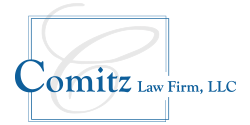 Automobile accidents can have a number of causes, including but certainly not limited to:
Automobile accidents can have a number of causes, including but certainly not limited to:
- distracted driving
- a poorly-maintained vehicle
- driver fatigue
- hazardous weather conditions
- disregarding traffic laws
Driver negligence can play a role in any of those scenarios. For example, driving in a torrential downpour without slowing down can end in a collision with another vehicle.
What is Negligence?
Negligence refers to a party’s failure to exercise the reasonable care expected of them in a particular situation. On the road, every driver has a duty of care to maintain a safe operating environment for other motorists, passengers and pedestrians. Breaching this duty can lead to an accident with injuries and give rise to a negligence lawsuit.
Contributory Negligence and Comparative Negligence
Determining liability in multi-vehicle accidents can be quite challenging and consequential. Even a two-car collision can be complex when both drivers were negligent.
Jonathan Comitz and his team at Comitz Law can guide you through the process.
Depending on the state, an injured person may be barred from filing a claim if they contributed to their injuries — even if they are determined to be only one percent at fault. Only Alabama, Maryland, North Carolina, Virginia, and Washington, D.C. follow this pure contributory negligence standard.
In a pure comparative negligence state, a person can still recover compensation for the injuries sustained in an accident even if that person is found to be partially at fault for causing an accident. Under this standard, a person who is 99% responsible for causing the accident can still recover damages. However, the damages would be reduced by the personʼs percentage of fault.
Thirteen states have pure comparative negligence laws, while the remaining thirty-three have modified comparative negligence laws, of which there are two versions. In the ten states which follow a 50% threshold of fault, an accident victim is able to sue and receive compensation, as long as their level of fault was less than 50%. Under the 51% threshold used by twenty-three states, accident victims can receive damages if they share fault up to 50%.
Pennsylvania employs a modified comparative negligence standard utilizing a 51% threshold.
The standard’s specifics are set forth in 42 Pa. C.S. § 7102 (a):
“In all actions brought to recover damages for negligence resulting in death or injury to person or property, the fact that the plaintiff may have been guilty of contributory negligence shall not bar a recovery by the plaintiff or his legal representative where such negligence was not greater than the causal negligence of the defendant or defendants against whom recovery is sought, but any damages sustained by the plaintiff shall be diminished in proportion to the amount of negligence attributed to the plaintiff.”
To illustrate the Pennsylvania standard, if a plaintiff were determined to be 20% responsible for the accident, the damages would be diminished by that percentage.
Government Liability
Not all automobile accidents are caused by the negligence of a motorist. Sometimes the negligence lies with the entities responsible for the roads.
Certain conditions involving these roads are conducive to motor vehicle accidents. These include, among others:
- potholes
- loose gravel or asphalt
- faded marking lines
- eroded driving surfaces
- lack of traffic signals
- dangerous curves
- lack of rumble strips
- uneven pavement
- inadequate signage
- cracks in road
- road debris
In Pennsylvania, the agencies charged with the design and maintenance of roads enjoy broad immunity from lawsuits. This immunity stems from either the Sovereign Immunity Act or the Political Subdivision Tort Claims Act. The former applies to state agencies, while latter applies to municipalities. Both acts contain exceptions which allow lawsuits for injuries resulting from road defects. However, monetary damages are limited and plaintiffs are faced with shorter filing deadlines.
If you’ve been injured in an automobile accident resulting from someone else’s negligence, call Comitz Law at 570-829-1111 or email info@comitzlaw.com.


